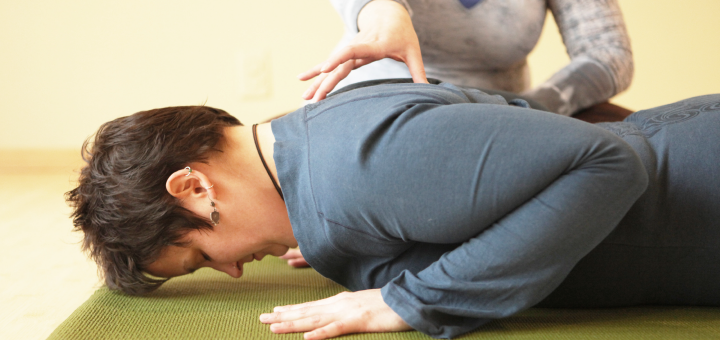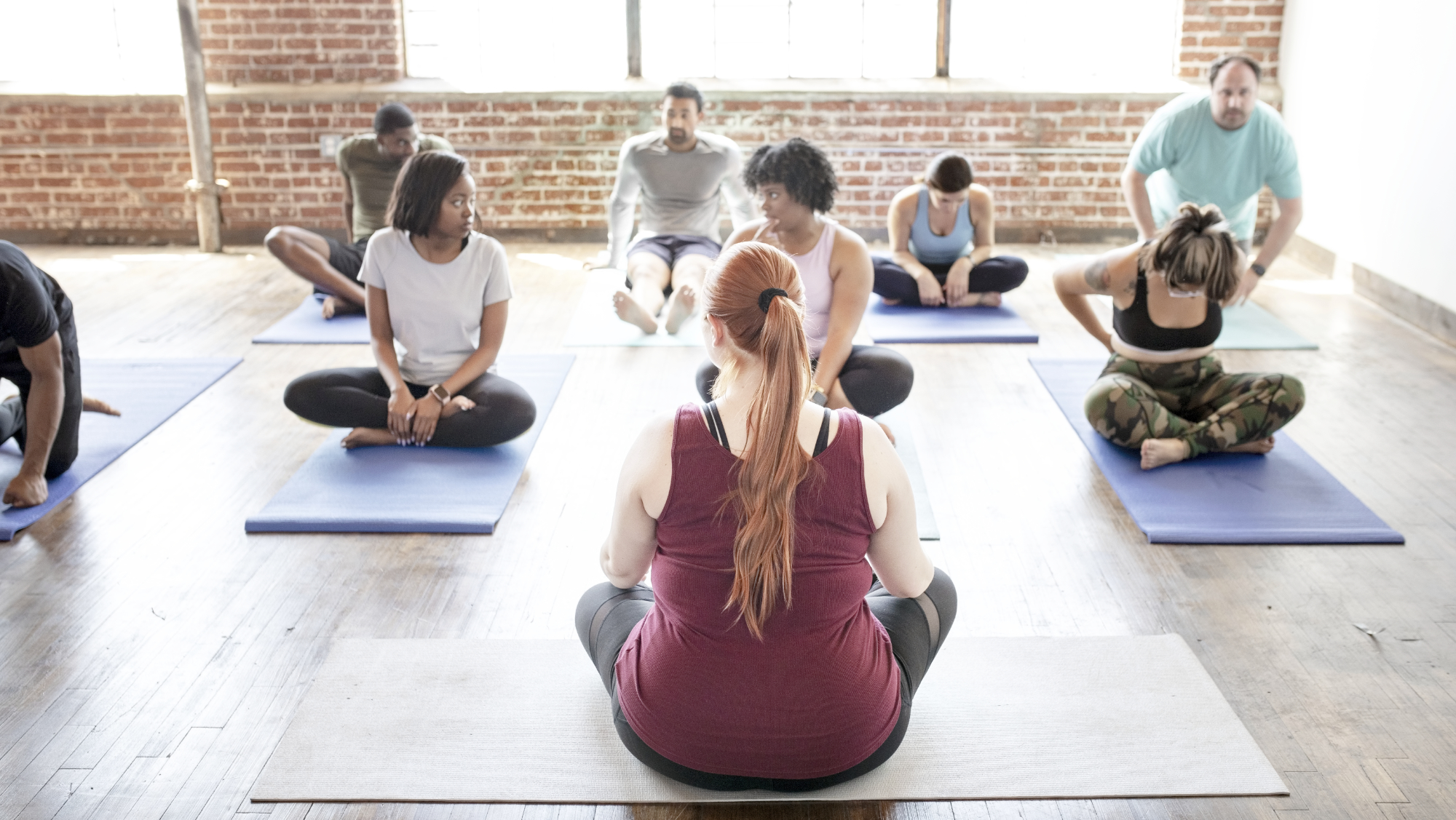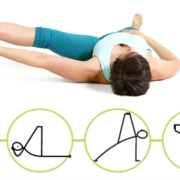Ten Common Mistakes Yoga Teachers Make

One of my clients, let’s call him Ben, ended up with hip surgery because of what his very first yoga teacher did. You see, Ben had very tight hips. So he went to a yoga class, hoping to remedy the situation. His yoga teacher had a solution – he instructed Ben to get into a cross-legged position on the floor (Easy Pose) and then had two students literally sit on his knees for some time(!?) Needless to say, that experiment did not end well for Ben and set him up for years of hip pain and, ultimately, hip replacement surgery. Ben was amused by the look of horror I had on my face when I heard that story. He was brought to see me by his wife, his hips still tight. Fortunately, he stuck around as it took us some time to reestablish his trust in yoga and yoga teachers. My hope is that you will never do anything like that, but there are still some common mistakes that we all make now and then.
Ten Common Mistakes Yoga Teachers Make
1. Get too ambitious. I have this book written by a somewhat famous yoga teacher, that has a number of yoga sequences he recommends for teaching. The average number of poses he suggests is about 40(!) per class, not counting the Sun Salutation. Keep in mind that about two-thirds of all poses need to be done on both sides, which will take the total number of poses to about 65. And those are not some simple stretches – we are talking strong backbends, deep twists, complex standing poses, inversions, etc., that require great care going in, staying in, and coming out of. Let’s do the math. That same teacher recommends about 5 min set-up to focus + 5 min of Sun Salutations + 5-10 min Savasana + 5 min meditation at the end. In a generous 90-minute class, we are looking at 65-70 minutes dedicated to 65 yoga poses (and we are not counting transitions), which makes it around 1 minute per pose. Can you do it? Certainly. Should you? That’s a different question. Ultimately, we want to teach our students to pay attention to what’s going on in their bodies, and it’s hard to do that if you are racing from one pose to the next.
2. “Breeze through” the practice. This is what happens if you do each pose briefly and then quickly move on to the next one. I attended a yoga class recently, and it was on display loud and clear. The choice of poses was good, the instructions were clear, the teacher seemed like a nice enough person, and the whole practice was, well, “nice.” But I didn’t feel like I’d done any particular work in the course of the practice, and I did not feel much different on any level – physical, energetic, mental – at the end of the class. All the teacher had to do was spend a little more time in certain poses and bring them to life with breath and attention, and that would have turned a “nice” class into a great one. Opportunity – wasted!
3. Make random choices. For the practice to be effective, you need to have a clear vision of what you want to accomplish (your intention). Based on that, you make your decisions about how you are going to start, what you are going to include, how you will arrange different elements, and how you plan to wrap it up. This is called “sequencing a yoga practice.” My teacher Gary Kraftsow often jokes that when yoga teachers die, they go to Purgatory, where they have to prove every yoga sequence they ever taught. If they can’t show the logic behind the sequence – they go to yoga hell. I remember in my early days of teaching, I would leave the class thinking, “I am going straight to yoga hell for what I just taught.” Luckily for my students and me, it doesn’t happen very often nowadays.
4. “Sweat them good” attitude. Some teachers make it their priority to increase the intensity of the class until the students perspire; this is considered a sign of a “good workout.” What does that have to do with yoga? I do not recall Patanjali saying: “Profuse sweating is a sign of advancement in a yoga practice.” To me, this means substituting the inner intensity of focus, presence, and awareness for the outer intensity of physical exhaustion. To each their own, I guess.
5. Get distracted and veer off course. This happens to the best of us. We start a class with the intention of increasing mobility in the upper back and somehow end up working on the feet. It’s not a bad thing if everything falls into place and you end up with a well-rounded, cohesive practice. But that rarely happens. More often, you end up with a weird soup of “a little bit of this, a little bit of that” without a particular focus, leaving students disoriented. Even if the students can’t articulate it, they can usually sense if the teacher is lost in the woods and can’t find her way back.
6. Lose the oomph. There is a Russian saying: “Having started with cheering, they have finished with mourning.” This happens when you begin the class full of energy, ideas, and good intentions, but halfway through, you begin to lose focus, precision, and interest; this is when the practice starts to unravel. I have to remind myself of this expression whenever I feel like my focus wavers; I know that my students deserve my full attention from the beginning to the very last minute.

7. Run out of time. This is another common problem. We get so excited about the class, one thing leads to another, and before you know it, you only have 10 minutes left and still a bunch of stuff to do. So you end up either slowing it down abruptly or running past your scheduled end time. Neither is a good idea. We don’t want to scramble the end of the practice and undo all the good work we’ve done up to that point. And we also want to be respectful of our student’s time – we all have schedules and commitments beyond a yoga class. The simple solution is to plan ahead of time and, of course, keep track of time during the class.
8. Drag out the instructions. Some poses require more instructions than others. Some students require more instructions than others. We have to be mindful of that and adjust accordingly. Often, with experienced students, the details matter, not the basics. I remember attending a class with a teacher who was very verbose. With almost every pose, the students knew exactly what to do and did it perfectly fine on their own. But she kept talking and talking. When the students moved forward she would speed up her speech to catch up to them. Throughout the entire practice, I had the image of us, students, riding away on the train and the teacher running after us, shouting her instructions and unable to keep up. Setting a clear direction for the group with fewer words is often better.
9. Focus too much on the needs of one student. I have a student who is having a lot of trouble with her foot. It is so painful that she cannot do any standing poses at all. Yet she still wants to come to classes because she misses the comradery. Of course, I could do the entire class close to the ground, but I don’t think it’s fair to other practitioners who would benefit from standing poses. We end up adapting every standing pose to a chair pose for her. Most of the time, it’s not a big deal. But sometimes, I catch myself spending too much time checking on her and potentially missing out on what other students are doing. Note to self: don’t forget that other students require your attention, too.
10. Try to predict the student’s response. That’s a tough one. We all want our students to benefit from the yoga practice (of course!), and we set certain intentions to accomplish for each class. Whether or not we get there depends both on our skills as yoga teachers AND our students’ response to the practice. Ultimately, it’s our job to steer them in the right direction, but it’s up to them to take it or leave it. Whenever I feel uncertain of how my students are going to react to a particular meditation, I think of a client of mine who teaches meditation at a mental health facility. Her classes are attended by students who suffer from schizophrenia, bipolar disorder, and a number of other serious mental issues. She says that when she teaches meditation, some of them stare at her, some wander around the room, and some fall asleep. It is hard to know if they are getting anything out of it. But the good thing is that they keep coming back. She says that her job is to keep at it and hope they will benefit from it on some level. So if a student of mine gets distracted during meditation, I remind myself that she is on her own journey and I cannot rush it or force it.
The bottom line is that no matter how experienced we are, we still make mistakes. The question is whether or not we are aware of it and choose to learn from them. We have to practice what we preach, and yoga is about self-awareness and the journey of self-transformation. So let’s walk the walk!
What mistakes did you observe in yourself and other teachers that we can all learn from?









Nail on the head. One I see happen a lot is unwillingness to give up a “cool” and often complicated sequence when the students are struggling.Sometimes we need to dump the genius choreography upon viewing the students present. If we’ve practiced a long time we forget what beginners feel like and serve up our own practice. Students leave disappointed in themselves and remembering why they quit yoga before.
Beth: How true! Sometimes we forget that yoga class is not the time to show off, but is about meeting the needs of the students. I believe Sri Krishnamacharya used to say: “The teacher should wear neutral clothing”, meaning that when you teach a class it’s not about you – it’s about them!
Watch out for these 2; 1) yoga teacher Prima donna; she never leaves her own mat and just sort of “performs” her own yoga while she talks about it, and 2) Narcissistic yoga teacher; wears revealing or distracting clothing and if there’s a mirror in the studio she watches herself more than her students.
Thanks Robin! Indeed, I’ve observed both of those behaviors; first more often then the second. Thanks for contributing!
Is this behaviour confined soley to women, Robin?
I’ve been to a yoga class where the teacher was afraid of silence at the beginning of class during meditation. As we were sitting in “easy pose” to meditate to center, he said, don’t worry, we won’t be here in this silence for very long. (???) Talking too much can be too distracting and tune out our awareness.
Agreed! Thanks for your contribution, Amy. The same applies to Savasana at the end – less talk, more awareness.
Good article. Just looking through your website and wishing you were teaching in my home town 🙂
Thanks Sophie! Where do you live? I come from viniyoga lineage and we have awesome teachers everywhere. Here is the directory, if you are interested: http://www.viniyoga.com/learn-experience/viniyoga-teachers-and-yoga-therapists
As a yoga teacher here in New Zealand I can relate to a lot of this. I have trouble with running out of time to teach all I want to teach. I think you could add to this list yoga teachers who try to teach big dramatic poses, with people stretched to their limit, who are only fairly much beginners. In NZ there is often a macho attitude that says more is more; not enough layering, not enough subtle yoga, not enough consideration/empathy for the inflexible, the middle-aged, and weak.
I would also add: not informing the less experienced students (esp. 1st time students) about modifications they should take for advanced poses. It is so easy for new students to injure themselves by trying to copy what everyone else is doing without being aware of the proper alignment! Or to get discouraged and frustrated about not being able to do certain poses.
I wholeheartedly agree, thank you for contributing, Sasha!